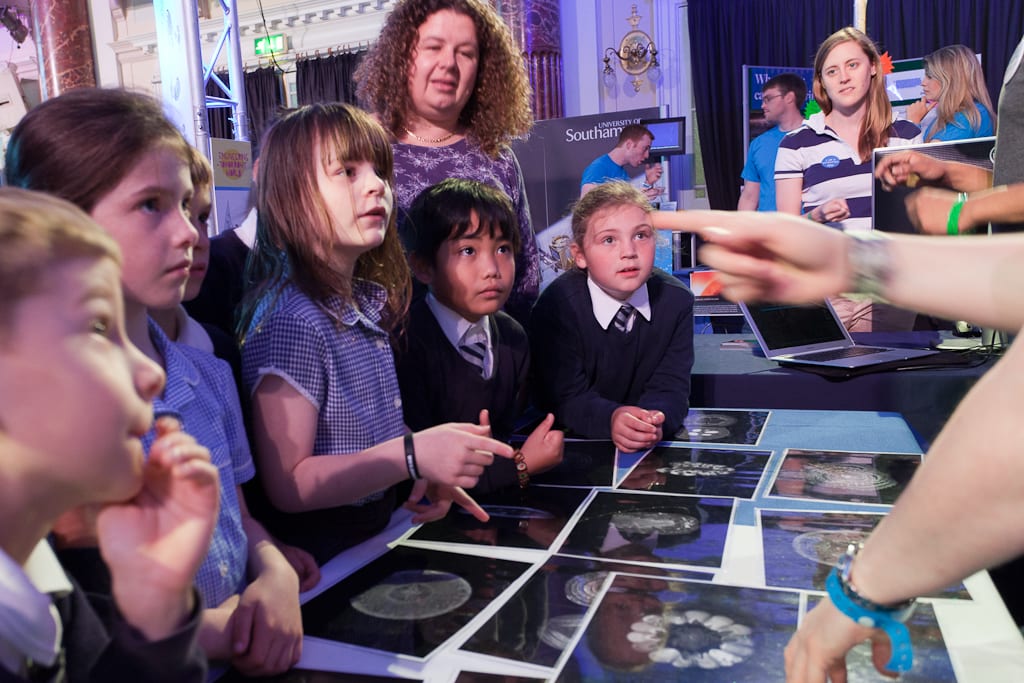Three eggs, two eyeballs and one Minister of Science – Behind the Scenes at Cheltenham – Day 3/6
By news editor, on 15 June 2012
Behind the Scenes at Cheltenham is a daily blog from the UCL CABI team at Cheltenham Science Festival. Every day, a member of the team will be talking about their experiences of running a stand.
Day 1 | Day 2 | Day 3 | Day 4 | Day 5 | Day 6
What a day in the Discover Zone! Today, we were surprised by a visit from the Minister of State for Universities and Science, David Willetts.
I was chosen to represent the Discover Zone and talk to Mr Willetts about why we love communicating science with kids. I started by debunking some myths around MRI scanners: just for the record folks, there is no harmful radiation in MRI scanning, and it’s completely safe (as long as you don’t walk in to the scanner room with any metallic objects!).
After my speech and a whirlwind tour, Mr Willetts was off again and I returned to our stand, where today we were scanning some new delights, other than just fruit and veg… (more…)
 Close
Close




